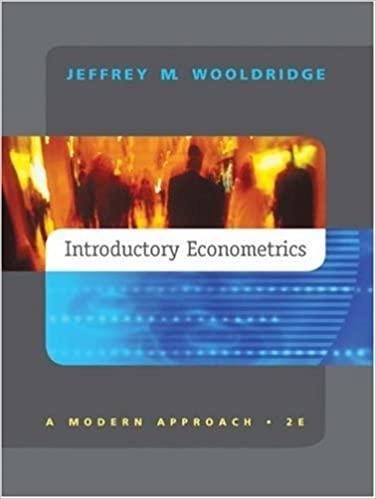Question
Question 3 Read attachments 4 to 5. (a)(3/4 mark) Attachment 4 states that in anticipation of exports of oil from Iran decreasing to zero in
Question 3
Read attachments 4 to 5.
- (a)(3/4 mark) Attachment 4 states that in anticipation of exports of oil from Iran decreasing to zero in November, the price of crude oil increased in October. Why would the price of crude oil increase even before a reduction in supply occurs?
- (b)(1/2 mark) Why does attachment 4 suggest that the expected increase in price in November did not occur?
- (c)(3/4 mark) Use the demand/supply model to explain why attachment 5 suggests that food prices have decreased following the decrease in the price of oil.
Attachment 4 Trumpsy turvy The Economist; November 17 2018
The oil price was supposed to be soaring around now. With American sanctions against Iran taking effect earlier this month, exports from that country, the world's fourth-largest producer of crude oil last year, were expected to shrink close to zero. In anticipation the price of Brent crude, the international benchmark, went above $86 in early October, a four-year-high, and some warned of price above $100 a barrel.
Instead, by November 8th oil had entered a bear market. The price of Brent crude stood th
at $66.53 on November 14 ...
Some of the reasons for the slump are standard fare. In October the IMF lowered its forecast for global economic growth...But the oil market's recent volatility also reflects new forces...
...it is America that has had the greatest destabilising effect. This year it became the world's top producer of crude. Its shale companies are pumping out oil at a phenomenal rate. Output in August was 23% above the level 12 months earlier...
Mr Trump's trade policies are also depressing demand for oil. The IMF's lower forecast for growth is due in part to a slow-down in emerging markets, but also to rising ten- sions between America and its trading partners, a strain that further weakens emerging economies. The growth in air freight and shipping has fallen by about half in the past year...
Attachment 5 Oily food The Economist; October 10 2015, p.68
The prices of staple crops, like those of other commodities, are falling fast. In August they reached their lowest level for eight years, down by over 41% from their peak in 2011. This is not because people are eating less, or because farmers have become much more productive. Not is it because of a slowdown in Chinese growth, in contrast to many other commodities. Whether going up or down, food prices are largely driven by other factors, among them oil prices and government policy.
Oil first. Cheap fuel means cheaper food. Natural gas, whose price is tied to that of oil, is used for producing fertiliser. . . Cheap oil also means less demand for biofuels, which in turn means cheaper food because of reduced appetite for grains used in biofuels...
Step by Step Solution
There are 3 Steps involved in it
Step: 1

Get Instant Access to Expert-Tailored Solutions
See step-by-step solutions with expert insights and AI powered tools for academic success
Step: 2

Step: 3

Ace Your Homework with AI
Get the answers you need in no time with our AI-driven, step-by-step assistance
Get Started


